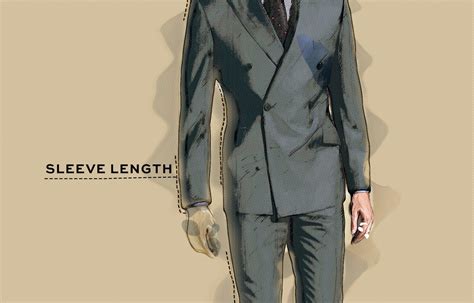Why Fit is the Foundation of Impeccable Style
In the vast landscape of men’s fashion, trends come and go, but one constant remains: fit. It’s the silent language of sartorial elegance, transforming even the most basic garments into statements of sharp style. You can wear the most expensive brands, but if your clothes don’t fit well, your entire look falls flat. Conversely, well-fitting, affordable clothing can make you look far more polished and put-together than someone in ill-fitting luxury items. Understanding and applying a few fundamental fit rules is not about chasing fleeting trends; it’s about building a timeless, confident wardrobe. Let’s dive into the three non-negotiable fit principles that every man must master.

Rule #1: The Shoulders Are Non-Negotiable
Whether it’s a suit jacket, a blazer, or a button-down shirt, the shoulders are the anchor of the garment. This is the one area that is incredibly difficult and often expensive to alter, making it crucial to get right off the rack. For a jacket or blazer, the seam where the sleeve meets the body should sit precisely at the edge of your natural shoulder. There shouldn’t be any overhang, nor should the fabric pull tight, creating dimples or wrinkles on the shoulder cap. For shirts, the shoulder seam should align with the point where your shoulder bone ends and your arm begins. A perfect shoulder fit creates a clean, strong silhouette, providing the ideal foundation for the rest of the garment to drape correctly.

Rule #2: Master the Art of Proper Length
Length often dictates proportion and can dramatically impact your perceived height and body shape. This rule applies to sleeves, trousers, and shirt hems. For jacket sleeves, aim for the cuff to end right where your wrist meets your hand, allowing about a quarter to half an inch of your shirt cuff to show. Shirt sleeves should end at the top of your wrist bone. When it comes to trousers, the ideal break depends on your preference, but a slight break (where the fabric gently creases once above your shoe) is universally flattering and modern. Avoid puddling fabric around your ankles or trousers that are too short, revealing too much sock when standing. For shirt hems, if worn untucked, the hem should generally fall around the middle of your fly, covering your belt without going much lower than your crotch, preventing a boxy or sloppy look.

Rule #3: Embrace the Taper, Avoid the Bag
Gone are the days of overly baggy clothing that swamps your frame. Modern style embraces a more tailored, tapered silhouette that follows the natural lines of your body without being restrictive. This doesn’t mean everything needs to be “skinny”; it means avoiding excess fabric. For trousers, ensure they taper subtly from the thigh down to the ankle. They should be comfortable in the seat and thigh, but not billowy. For shirts, pay attention to the chest and waist. A well-fitting shirt should lightly skim your torso, allowing full range of motion without gaping buttons or excess fabric ballooning around your midsection when tucked in or standing. The sleeves of both jackets and shirts should also have a slight taper, not looking like wide tubes.

The Tailor: Your Secret Weapon
While these three rules provide a solid framework, remember that very few garments will fit perfectly off the rack. This is where a good tailor becomes an invaluable asset. Minor adjustments to sleeve length, trouser hems, or waist tapering can elevate an ‘almost good’ fit to an ‘impeccable’ one. Investing a small amount in tailoring can make an affordable garment look custom-made and far more expensive, truly unlocking the potential of these fit rules.

Conclusion: Dress Smarter, Not Harder
Mastering these three fit rules—shoulders, length, and taper—is not about adhering to rigid fashion dogmas, but about understanding how clothing interacts with your unique physique. By prioritizing these fundamentals, you’ll build a foundation for a sharper, more confident, and effortlessly stylish wardrobe. It’s about dressing smarter, not harder, and letting your clothes enhance, rather than detract from, your personal presence. Begin applying these principles today, and watch your style transform.




